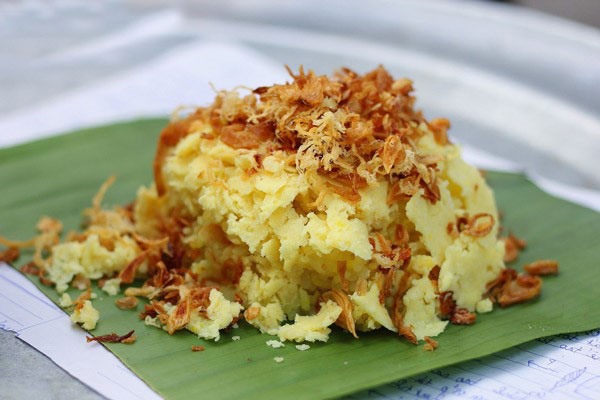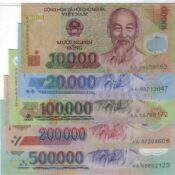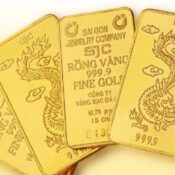Must-try street food in Vietnam (part 2)

Must-try street food in Vietnam (part 2)
Continuing to explore street food in Vietnam, you will probably be overwhelmed by what we can discover. Let’s name some more delicious dishes with us!
- Sticky rice.
Xoi is a familiar dish of Vietnamese people, often blown to burn incense on the day of death, the first day of the year or on death anniversaries and holidays. There are many different types of sticky rice such as gac sticky rice, bean sticky rice, corn sticky rice, steamed sticky rice… Each type has its own color and flavor, but all types of sticky rice are made from sticky rice and have the same flavor and aroma. light, sweet from sticky rice; moderate stickiness from rice. When we eat, we will feel the sweet, nutty and greasy taste of rice, especially new sticky rice.
In fact, sticky rice can be eaten with many different dishes, creating different flavors. For example, sticky rice can be eaten with braised meat, patties, eggs, sausage, sausage, chicken, pate, etc.
Similarly, with sticky rice for sweet dishes, we can mention sticky rice ice cream or gac sticky rice. However, the common point is that they are all delicious and cheaper than other dishes.
- Recommend addresses:
- 67 Bach Dang, Hoan Kiem, Hanoi.
- 98 Nguyen Che Nghia, District 8, HCM City.
- 30A, Tho Nhuom, Hoan Kiem, Hanoi.
- Nom
(Sweet and sour grated salad)
Nom is a combination of a variety of fresh vegetables, considered to be salad in Western countries. The main ingredients include grated pieces of turnip, cabbage or papaya and slices of cucumber with grated boiled lean pork. Other auxiliary ingredients are grated carrot, slices of hot chilly and broken roasted groundnuts. These are used to make the dish more colourful. All are mixed thoroughly before being soaked in vinegar, sugar, garlic, hot chilly and seasoned with salt. The mixture of ingredients is put into a dish before being covered with some spicy vegetables.
To try a mouthful of Nom is to enjoy a combination of all the tastes, including sour, hot, sweet, salty and fragrant. The dish helps digest at meal and party times. It can become an addictive aid to assist the real connoisseur to enjoy more food.
- Recommend addresses:
- 48 Ta Quang Buu, Ha Ba Trung, Hanoi.
- 71 Lo Duc, Hoan Kiem, Hanoi.
- 76 Nguyen Van Thu Street, District 1, HCM City.
- Banh bot loc.
(Rice dumpling cake)
Hue tapioca cake is known as a very typical dish of Hue. The tapioca cake filled with shrimp and meat, with a chewy, soft outer shell, has made many visitors feel nostalgic.
Hue tapioca cake is not only considered a snack, you can absolutely enjoy it instead of rice or the main meal of the day. This type of cake is popular in many localities, however, only when eating in Hue will you feel the typical, authentic taste of the Central region.
Hue tapioca cake is most delicious when it has just been steamed. As soon as it comes out of the pot, the cake is still steaming. The soft and chewy taste of the transparent tapioca flour, mixed with the shrimp, meat, and banana leaf filling, will make you unable to refuse. The most delicious way to eat tapioca cake is to slowly peel off the banana leaf layer, dip the cake in a bowl of sweet and sour fish sauce, add a little fresh chili, you will slowly feel the essence of the dish. This rustic of Hue.
- Recommend addresses:
- 112k Thai Thinh, Dong Da District, Hanoi.
- No. 16, To Hien Thanh, Phu Cat, Hue.
- No. 106B, Luong Ngoc Quyen, Thuan Loc, Hue.
- Banh cuon
(Steamed rolled rice pancake)
One of the traditional breakfasts when it comes to Hanoi street food is banh cuon. There are several versions of this dish, one with minced pork (meat rolls), mushrooms, eggs or a mixture. Banh cuon is often eaten with fried onions, sweet and sour fish sauce, many fresh herbs and chili garlic fish sauce.
Banh cuon is a dish imbued with Vietnamese culture. Banh cuon is also a dish associated with festivals, such as the Korean Food Festival, Lunar New Year, or Mid-Autumn Festival. Banh cuon is considered a dish that brings luck, happiness and togetherness to the family. This is also a dish that represents the diversity and richness of Vietnamese cuisine, with many variations according to each region. Each type of banh cuon has its own unique characteristics in flavor, cooking and eating style, but they all share the same beauty of Vietnamese dining culture.
- Recommend addresses:
- 171 Be Van Dan, Ha Dong District, Hanoi.
- 66 To Hien Thanh – Hai Ba Trung, Hanoi.
- 68 Hang Cot, Hoan Kiem District, Hanoi.
- Chao suon.
(Pork rib porridge)
Rib porridge can be eaten at big restaurants, but it is difficult to feel as delicious as when eaten in the middle of a street. Rib porridge has a medium consistency, not sticky like banh duc, but also not thin enough to slurp like chicken porridge. The porridge is sweet and tender, the ribs are so tender that they almost melt, sometimes mixed with a bit of rough cartilage. It must be said that every bite you eat is sweet enough, the porridge slides down into your intestines but the delicious taste still lingers on the tip of your tongue.
The smooth and creamy porridge dish cannot be missed without a pair of fried rice noodles. On top of the bowl of starchy white porridge, the fatty pork ribs are mingled, with the yellow spots of crispy fried pieces on top. The support of each other in both flavor and form creates a harmonious, attractive whole that is difficult to refuse. The seemingly rustic dish is actually a delicate work of art from Vietnam cuisine.
Depending on taste, diners will add a little more pepper and chili powder. The bowl of rib porridge during the renovation period now has minced meat, quail eggs, pork floss, mushroom floss, fried onions… as a side dish. These variations are also new and strange, but honestly, the traditional bowl of rib porridge served with fried rice is already full of flavor and satisfies the taste buds.
- Recommend addresses:
- Ngo Huyen, Hoan Kiem, Hanoi.
- No. 281 Nguyen Trai, District 1, HCM City.
- No. 39 Hang Dieu, Hoan Kiem, Hanoi.
Don’t forget to contact Trang An Ecorest Resort & Spa – (+84 915 702 099) or visit us at www.tranganecorestresort.com if you need any support!
Trang An Ecorest Resort & Spa
Image source: Internet








